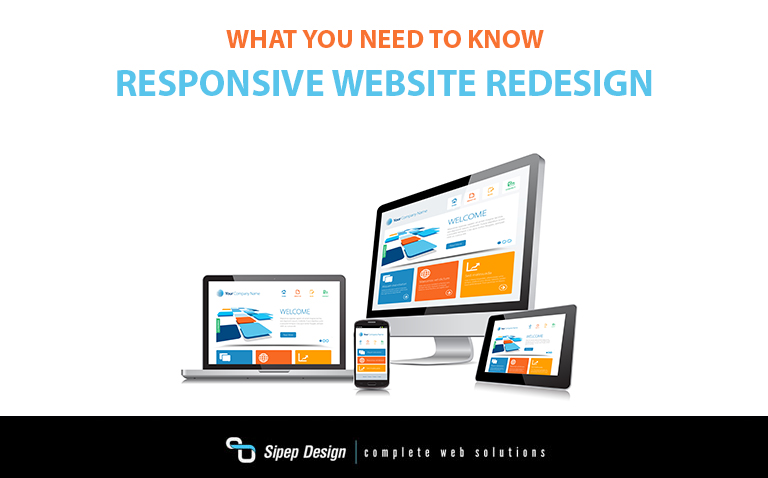
Why is Responsive Website Design Important?

Communicate on multiple platforms with responsive web design.
If you’ve contemplated a website redesign recently, then it’s likely you have also encountered these two buzzwords: responsive website. But other than seeing the term painted across headlines, you may not feel that you truly understand its value and impact. In the event this is news to you, stick around because we’re about to explain why responsive website redesign is a crucial step for your brand and business – and quite possibly the most important marketing investment you should make this year.
The Status of Mobile Search
In November 2014, Google reported that its mobile search traffic had surpassed desktop search. Considering that Google has 90 percent of the market share for mobile search, this data is extremely valuable: it tells us that mobile-friendly websites are no longer an option for those of us that want to win at search; they are a must-have. In fact, Google now prioritizes mobile-friendly websites in its mobile search results, giving early adopters a distinct advantage over competitors that have failed to plan for mobile growth.
Why Design a Website to be Responsive
Now that we have this knowledge of mobile search data in hand, it’s time to consider how to approach a website redesign that speaks to both search engines and our mobile end users (which account for 60 percent of time spent on digital media in the U.S.).
Generally, you have three options when it comes to mobile design: separate URL (displayed as m.company.com), dynamic serving (same URL, different HTML for each device), and responsive web design (same URL, same HTML). The latter is our preferred mode of mobile redesign, and here’s why:
Same URL – Responsive websites have the same URL regardless of the device that is accessing the site, so the mobile site lives under the same roof as the desktop site. This means that your mobile visitors have full access to the same content as your desktop visitors; the difference merely lies in the way it’s presented on the screen.
Same HTML – With responsive website design, the HTML code is static as well. This makes it easier for search engines to index the content, which bodes well for SEO efforts. With static HTML, the presentation of the content changes based on screen size, which ultimately makes for a better user experience. This is what makes the website responsive. (It’s also Google’s recommended design pattern, by the way.)
Efficient conversion – For brands with existing websites, a responsive redesign is typically a smooth transition when handled by an experienced, reputable web design firm. Where a separate URL demands a site built from scratch, a responsive design is able to borrow from elements already in place.
Responsive website design enables a rich user experience – whether on desktop, smartphone, tablet or phablet – without compromising content, usability, or search engine performance. It streamlines all of your content into one, beautiful, digital sales tool that can be tapped by anyone, anywhere, and on any device. And that, our friends, is going to be essential to your online success, as we see more of our search migrate to mobile in the coming months.
Your Turn: What is the one thing that frustrates you most about non-mobile websites?


